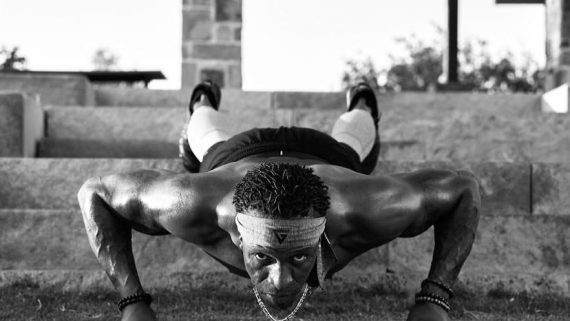Patanjali, Yoga Sutras & Eight Limbs of Yoga
Patanjali, Yoga Sutras & Eight Limbs of Yoga
By: “AJ” Amy Jo Crowell, Publisher Dallas Yoga Magazine, Co-Founder Cosmic Yogi Movement & Festivals, Certified Kundalini Yoga Instructor
I am often surprised at how certain aspects of the yoga practice has become washed down or even omitted in the United States. I talk to yoga teachers who have been through yoga teacher training who have never heard of the Eight Limbs of Yoga and people who have taken yoga for decades who are also uneducated on the topic. The Eight Limbs of Yogi is a guide for us to become the best yogis we can by having rules to practice and lead us on a disciplined path of enlightenment. It teaches us to look within ourselves to find peace and bliss. My hope is yogis who are not educated on this topic will incorporate these Yoga Sutras into their life and they will pursue a more spiritually guided path. This article is meant as an overview on the topic and it is encouraged to read more on the Eight Limbs of Yoga, join workshops on the topic and enjoy self-practice.
Important Note: Please don’t jump into attempting all Eight Limbs of Yoga at once. It is suggestion practicing a few at a time…even one… until they become a part of your inner self. It is a process and each person’s journey is very different.
Who is Patanjali?
Patanjali is one of the most famous Indian sages of all times. He is believed to have written the Yoga Sutras which contain the Eight Limbs of Yoga. There is very little known about him including discrepancies on when he wrote them. Some claim it’s the 3rd, 4th or 5th century…but the exact date remains an unknown fact. Patanjali literally translated means forgetting self in meditation.
What are the Yoga Sutras?
The Yoga Sutras are a collection of sacred writing or, to be exact, 196 Sutras separated into 4 chapters. Patanjali’s (also known as the Father of Modern Yoga) writing was designed to teach us how to merge the mind and body with the universal power. It gives us a specific guide to follow to become better people and grow in our spirituality.

The Sutras 4 Chapters or Padas:
Chapter 1: Samadhi Padi (51 Stutras)
This chapter gives specifics on how to become enlightened through meditation and focus.
It explains the method used to become One with the Universal Power. It shares the definition of yoga, difficulties to attaining yoga, the reason for yoga, priority of daily practice, and non-attachment of material objects and involvements.
Chapter 2: Sadhana Pada (54 – 55 Sutras)
This chapter focuses on practice. The first six parts of the Eight Limbs of Yoga are described in detail with specifics.
Chapter 3: Vibhuti Pada (56 Sutra)
This chapter is written to discuss what happens when union is accomplished. The last two limbs are discussed with the framework established for the last three limbs.
Chapter 4: Kaivalya Pada (Final Chapter)
This chapter is solely for sharing details of finding the mind’s bliss or complete freedom.
Patanjali’s Eight Limbs of Yoga
- Yama: Universal Morality
Five Restraints
- Ahimsa (non-hurting): Compassion, patience, love for others, self-love, worthiness and understanding
- Satya (truthfulness): Honesty, forgiveness, non-judgment, owning your feelings, loving communication, letting go of masks
- Asteya (non-stealing): Right use of resources, letting go of jealousy, cultivating sense of self-sufficiency and completeness
- Brahmacharya (sensory control) Challenging emotions, moderation
- Aparigraha (non-possessiveness) Fulfilling needs rather than wants
- Niyama: Personal Observances
Five Disciplines
- Shaucha (purity) Evenness of mind, thought, speech, purity of body
- Santosha (contentment) Gratitude, acceptance, calmness with success or failure
- Tapas (purification zeal): Determination, willingness for practices
- Svadhyaya (study): Reflection, meditation, expanding knowledge
- Ishvara Pranidhana (devotion, surrender): Faith, dedication
- Asana: Body postures for health and meditation
- Pranayama: Control of prana (life force)
- Pratyhar: Synchronization of senses and thoughts
- Dharana: One-pointed concentration
- Dhyana: Deep meditation
- Samadhi: Awakening and absorption in spirit
Whether you are a new yogi or a seasoned yogi who practices the Eight Limbs as part of your lifestyle, taking a moment to ponder Patanjaili’s meanings of each is as important as holding your favorite pose in class. Make a commitment to yourself you will incorporate these rules in your life and continue in a positive direction on your spiritual yogic journey.

About the Author:
“AJ” Amy Jo Crowell is the Publisher of Dallas Yoga Magazine and Co-Founder of Cosmic Yogi Movement & Festivals. She has been in advertising, marketing, publishing and large-scale event planning for over 20 years. She was also certified in Kundalini Yoga in Samadhi ashram in Rishikesh, India. AJ leads Kundalini workshops and sound meditations with crystal singing bowls. She is a Magnified Motivation Mentor and has been in recovery from addictions for over 30 years. AJ is a co-host on Ken Goldberg’s Law & Disorder show on Tuesdays at 6pm on YouTube and Facebook.
www.cosmicyogimobment.com









